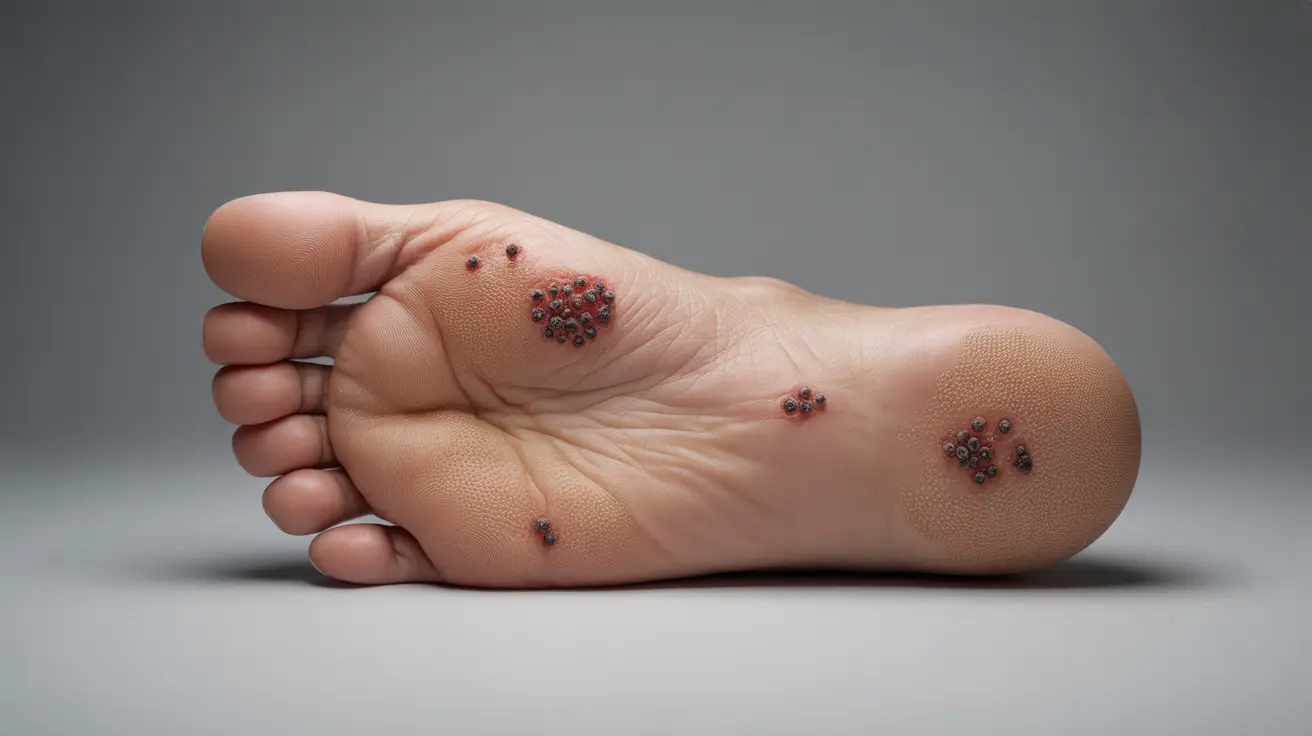Seed warts, also known as plantar warts that appear on the feet, can be both uncomfortable and concerning for those who develop them. These small, grainy growths are caused by the human papillomavirus (HPV) and often appear as tiny black dots surrounded by hardened skin. While generally harmless, understanding their nature and treatment options is crucial for effective management.
Whether you've recently discovered what appears to be a seed wart or are seeking better ways to treat existing ones, this comprehensive guide will help you understand their causes, identification, treatment options, and prevention strategies.
What Are Seed Warts and Their Causes
Seed warts are viral infections that occur when HPV enters the body through tiny cuts or breaks in the skin. The term "seed" comes from the small black dots visible within the wart, which are actually tiny blood vessels that have become clotted. These warts commonly appear on pressure points of the feet, making them particularly noticeable during walking or standing.
The virus thrives in warm, moist environments, making public pools, shower rooms, and similar locations common transmission areas. Direct contact with infected surfaces or individuals can lead to viral transmission.
Identifying Seed Warts
Seed warts have several distinctive characteristics that set them apart from other skin growths:
- Small, rough growths on the skin
- Black pinpoints (clotted blood vessels) visible within the wart
- May appear individually or in clusters
- Often painful when squeezed from the sides
- Usually found on weight-bearing areas of the feet
Treatment Options for Seed Warts
Over-the-Counter Solutions
Several effective over-the-counter treatments are available for managing seed warts:
- Salicylic acid preparations
- Freeze-off treatments (cryotherapy products)
- Wart removal patches
- Tea tree oil and other natural remedies
Professional Medical Treatments
When home treatments prove ineffective, healthcare providers can offer more aggressive treatment options:
- Professional cryotherapy
- Laser treatment
- Surgical removal
- Prescription-strength medications
- Immunotherapy
Prevention Strategies
Preventing seed warts involves several key practices:
- Keep feet clean and dry
- Wear protective footwear in public areas
- Avoid direct contact with existing warts
- Maintain strong immune system health
- Regular inspection of feet for early detection
Frequently Asked Questions
What causes seed warts and how do they spread from person to person?
Seed warts are caused by specific strains of HPV and spread through direct contact with infected surfaces or people. The virus enters through small cuts or breaks in the skin, particularly in warm, moist environments like swimming pools or communal shower areas.
How can I identify a seed wart and distinguish it from other types of warts?
Seed warts are characterized by small, rough growths containing tiny black dots (clotted blood vessels). They typically appear on pressure points of the feet and may be painful when squeezed sideways. Unlike common warts, they often grow inward due to pressure from walking.
What are the most effective home treatments and over-the-counter options for seed warts?
The most effective home treatments include salicylic acid products, over-the-counter freezing treatments, and wart removal patches. Consistent application and following product instructions are key to success. Some people also find success with natural remedies like apple cider vinegar or tea tree oil.
When should I see a doctor for seed wart removal or professional treatment?
Seek medical attention if the wart persists after several weeks of home treatment, becomes painful or bleeds, spreads to other areas, or if you're unsure about the diagnosis. People with diabetes or compromised immune systems should consult a healthcare provider before attempting self-treatment.
How can I prevent seed warts from spreading or recurring after treatment?
To prevent spread and recurrence, keep feet dry, wear protective footwear in public areas, avoid touching warts directly, and maintain good immune health. During treatment, keep the affected area covered and wash hands thoroughly after touching the wart.




